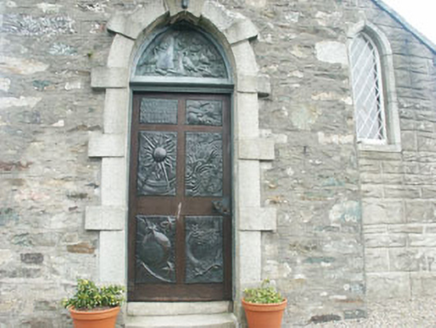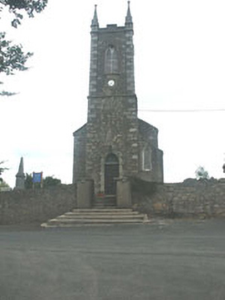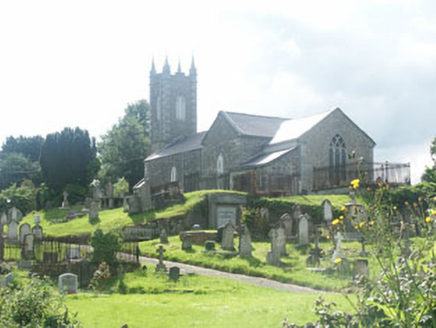Survey Data
Reg No
16310014
Rating
Regional
Categories of Special Interest
Architectural, Artistic, Social, Technical
Original Use
Church/chapel
In Use As
Church/chapel
Date
1780 - 1790
Coordinates
329166, 204183
Date Recorded
03/07/2003
Date Updated
--/--/--
Description
Detached three-bay single-storey Board of First Fruits Church of Ireland church, built 1783-8, with three-stage reducing tower (1821) and later chancel (1856). The church is roughly rectangular in plan with the tower to the east, shallow gable-ended single-bay transepts to both north and south, a two-bay gabled chancel to the west, and a single-bay lean-to vestry to the south side of the chancel. To the south face of the tower is a small lean-to section. This lean-to, the chancel and vestry do not appear to be original. The façade is in uncoursed rubble with granite quoins and dressings. The ground floor stage of the south elevation of the tower is finished in a render made to look like coursed stone, as is the east elevation of the small lean-to. The pitched roofs of the nave, transepts, chancel and vestry are slated and have stone parapets. The entrance is located on the tower and consists of a relatively narrow opening with granite Gibbsian surround, within which is a replacement door of c.1990 with moulded bronze pictorial panels, with another pointed arch panel above the door. The windows have pointed arch heads, with timber double lancet frames and leaded lattice panes to the nave and transept windows, and stone tracery to the chancel and vestry windows. The tower has a small clock face and large pointed arch louvered windows to its second floor stage, and is topped with a crenellated parapet with tall corner pinnacles. There is a small graveyard to the north and south sides of the church, with rubble retaining wall to the roadside to the north and west. There are gateways to the west and to the east, both with cast-iron gates, square rendered piers and granite steps.
Appraisal
Fine, largely well-preserved example of a late Georgian Church of Ireland parish church in the Board of Fruits style. Its visual impact is heightened by its elevated setting and the survival of the associated sexton's house (see 16310015).





